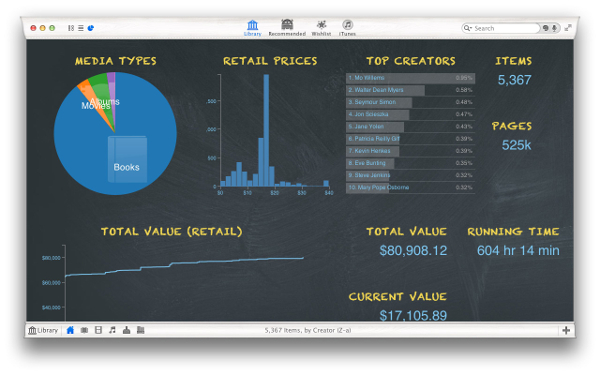

When viewing a Live Photo in the Photos app, swipe up to reveal more options, and choose Long Exposure under Effects. The Long Exposure effect is dirt-simple to use.

This happens algorithmically, which enables the app to keep the tones and detail in the sky and surrounding areas balanced. It’s the same principle as making a “real” long exposure by leaving the camera’s shutter open for a relatively long period of time, but instead of just absorbing more light, it’s combining the light in each of the frames. The third effect is Long Exposure, which blends all the frames from the video into one image. Bounce plays the video start-to-finish and then reverses it to play finish-to-start, and back again as a loop. Loop replays the video endlessly from beginning to end.

In iOS 11, Apple added three new effects that take advantage of the Live Photos video footage. Pressing and holding the image when viewing it in the Photos app plays back that video, giving you that Harry Potter-esque moving picture. With Live Photos enabled, it also saves a video file containing 3 seconds of frames around that still image. As soon as you tap the shutter button, the app evaluates the scene in milliseconds and delivers what it thinks is the best exposure for that moment. What’s Going On? - When you’re using the Camera app on an iPhone or iPad, it continuously analyzes the scene and even records it, but does not save the footage. Here’s the original image I captured, before I applied Long Exposure: And then I applied Apple’s new Long Exposure effect in the Photos app.
#Delicious library windows plus#
I pulled my iPhone 8 Plus out of my pocket and took one exposure, handheld, with the Live Photos feature turned on. If I really wanted to get the shot using the X-T1, I could have doubled up two or three filters (I also have 0.6 and 1.2 filters in my standard kit), but that introduces severe vignetting and some softness. Here’s a photo I took using my Fujifilm X-T1 camera at 1/4 second using an aperture of f/8.0 and with a 0.9 neutral density filter (which lets in about 12 percent of light): But you may not have a filter that’s dark enough - again, especially in bright daylight conditions.

However, very high apertures can cause distortion or softness on some lenses.Īnother way to compensate would be to add a neutral density filter in front of the lens, which also restricts the amount of light hitting the sensor and makes longer exposure times possible. The preview on your camera will be dark, but the buildup of light during the exposure makes the final image more balanced. You can set the aperture to a high value (f/16 or f/22) to restrict the amount of light coming through the lens. The other challenge with long-exposure photography like this is that the sensor records all the light in the scene, not just the waterfall, so you can end up with an overexposed image, particularly in the middle of the day. The tripod is necessary because you don’t want the camera to move during that time, which would introduce blur. The usual way to get this shot is to mount your camera on a tripod and set a slow shutter speed (perhaps half a second or longer) so the image sensor records the light reflecting from the water over a period of time, not just a fraction of a second’s worth. The silky-smooth waterfall catches the eye because it’s different: we know waterfalls are more textured and violent than this. I captured this image under bright, mid-afternoon light at Snoqualmie Falls, a popular tourist spot outside Seattle.
#Delicious library windows for free#
#1629: iOS 16.0.2, customizing the iOS 16 Lock Screen, iPhone wallet cases, meditate for free with Oak.#1630: Apple Books changes in iOS 16, simplified USB branding, recovering a lost Google Workspace account.#1631: iOS 16.0.3 and watchOS 9.0.2, roller coasters trigger Crash Detection, Medications in iOS 16, watchOS 9 Low Power Mode.#1632: Apple Card Savings accounts, SOS in the iPhone status bar, Tab Wrangler, Focus in iOS 16.


 0 kommentar(er)
0 kommentar(er)
